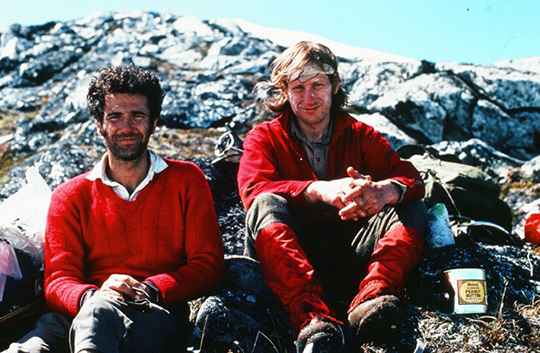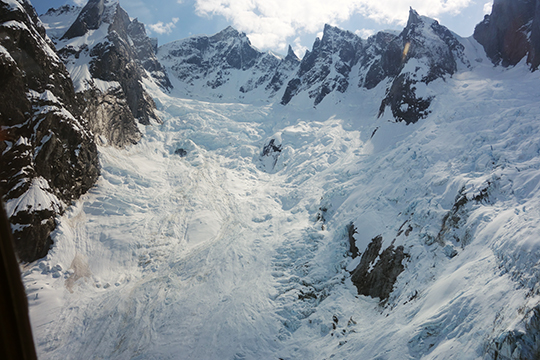
[Photo] John Frieh collection
John Frieh and Jess Roskelley spotted the face a year ago, while making a mishap-laden first ascent of No Rest for the Wicked (IV+ AI6 M7) in the Devils Thumb massif, along the Canadian-Alaskan border: a mass of north-facing snow and char-black rock, on a point named Lucifer, which rose for 1200 meters from a fractured pocket of the Stikine Icecap. When Frieh returned to the Stikine this May under high-pressure skies, he and his partner Doug Shepherd hoped to ascend a straight ice runnel that cleaved the wall cleanly in two.
In 1937, Fritz Wiessner made “the first serious mountaineering endeavor” on the Stikine Icecap, recorded Fred Beckey in the 1947 American Alpine Journal. Wiessner attempted a corniced 10,000-foot point called Kate’s Needle. “Although they do not rise so high as the great mountains farther to the N.W., these peaks of the Alaska-Canada Boundary are magnificent in their alpine grandeur and challenging in their technical difficulties,” the indomitable Beckey wrote. “Here, indeed, is one of Alaska’s neglected mountain regions, not without mystery.”
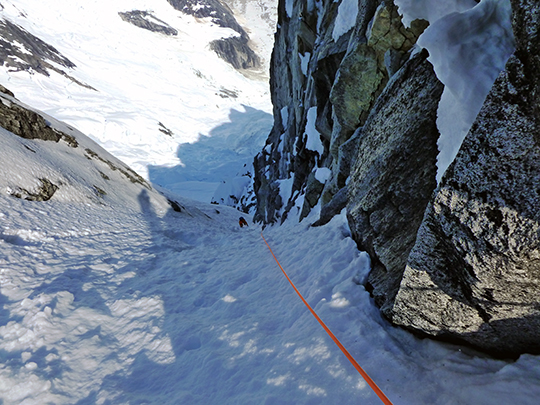
[Photo] Doug Shepherd
In 1976, nearly 40 years after Wiessner’s explorations, Peter Rowat and Rupert Roschnik sought their own mystery in the Stikine. They had hoped to summit the Devils Thumb by a promising line on its south face, but bailed low on the route as a storm rolled in. They huddled in their leaky tent for several days, making a plan for their remaining time on the glacier. From base camp on Upper Scenery Lake, the climbers along with Rowat’s wife, Nona, skied to the head of Patterson Glacier. From there, Rowat and Roschnik found an easy ascent up the east side of a point they called “Lucifer.”
Perhaps more memorable for Rowat than the ascent itself was the “moose jamboree” he recalls witnessing at Upper Scenery Lake. “Looking down at the lake, I watched as first one then many other moose swam into the middle of the lake and formed a big rotating circle–at least 20 moose,” he told Frieh recently. “I must have been so entranced by this spectacle that I never ran back to camp for my camera.”
This May, Frieh and Shepherd made their ascent of Lucifer in fewer than twenty-four hours. They flew by helicopter from Petersburg late in the day on May 14. They found soggy and warm conditions, with puddles of melt water forming around their tent. “I knew we were in trouble when I woke up at 1 a.m. and the [puddles] weren’t frozen,” Frieh said in a phone interview. They left camp an hour later and aimed for a less technical and safer route left of the direct runnel.
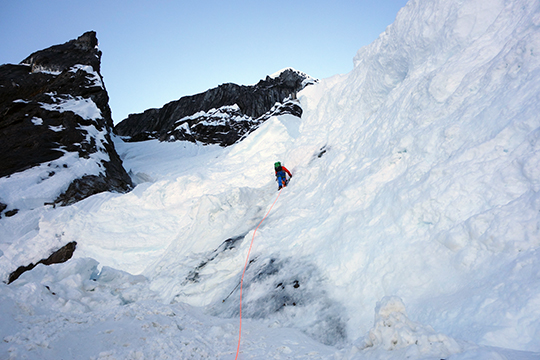
[Photo] John Frieh
By sunrise, the pair had disposed of most of the peak’s vertical gain. Though numerous crevasses and slushy snow slowed their steps, they reached the summit in a quick twelve hours, finding moderate terrain interspersed with sections of vertical snow and snice. “The face was, in short, a mess, and required some creative route finding and good-old-fashioned, blue-collar alpinism: post-holing and avoiding crevasses,” Frieh said.
The name of their route, Agua Sin Gas (III WI4 steep snow; “Water Without Gas”), references their only notable hardship: a forgotten cook stove and subsequent lack of hydration and caffeine. “[Having no water] likely would have ended the trip right then and there if it not for the warm temps, which resulted in some shallow pools on the glacier we were able to get water from,” Frieh wrote. “Still, in my book, no coffee is more or less an epic.”
Frieh has put up a number of first ascents on the Stikine over the last half-dozen years, and maintains that untrodden lines still await “anyone willing to invest the time and energy.”
Photos from Peter Rowat, Nona Rowat and Rupert Roschnik’s visit to the region in 1976
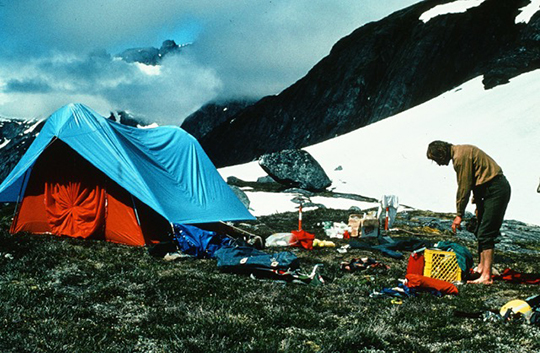
[Photo] courtesy Peter Rowat, Nona Rowat and Rupert Roschnik
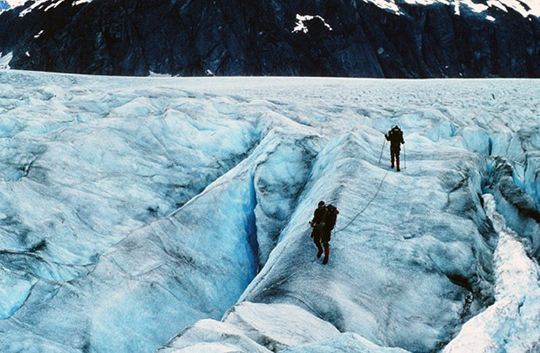
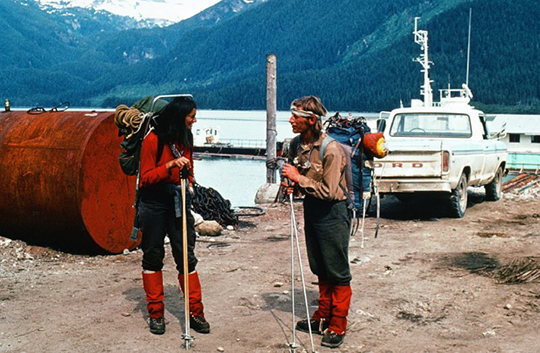
[Photo] courtesy Peter Rowat, Nona Rowat and Rupert Roschnik
